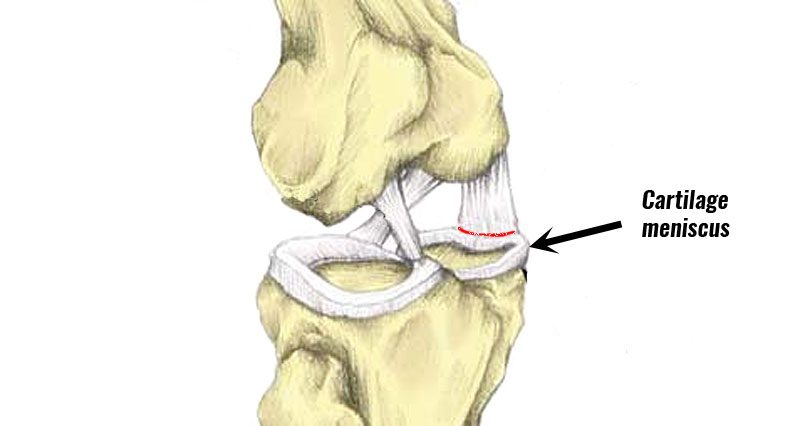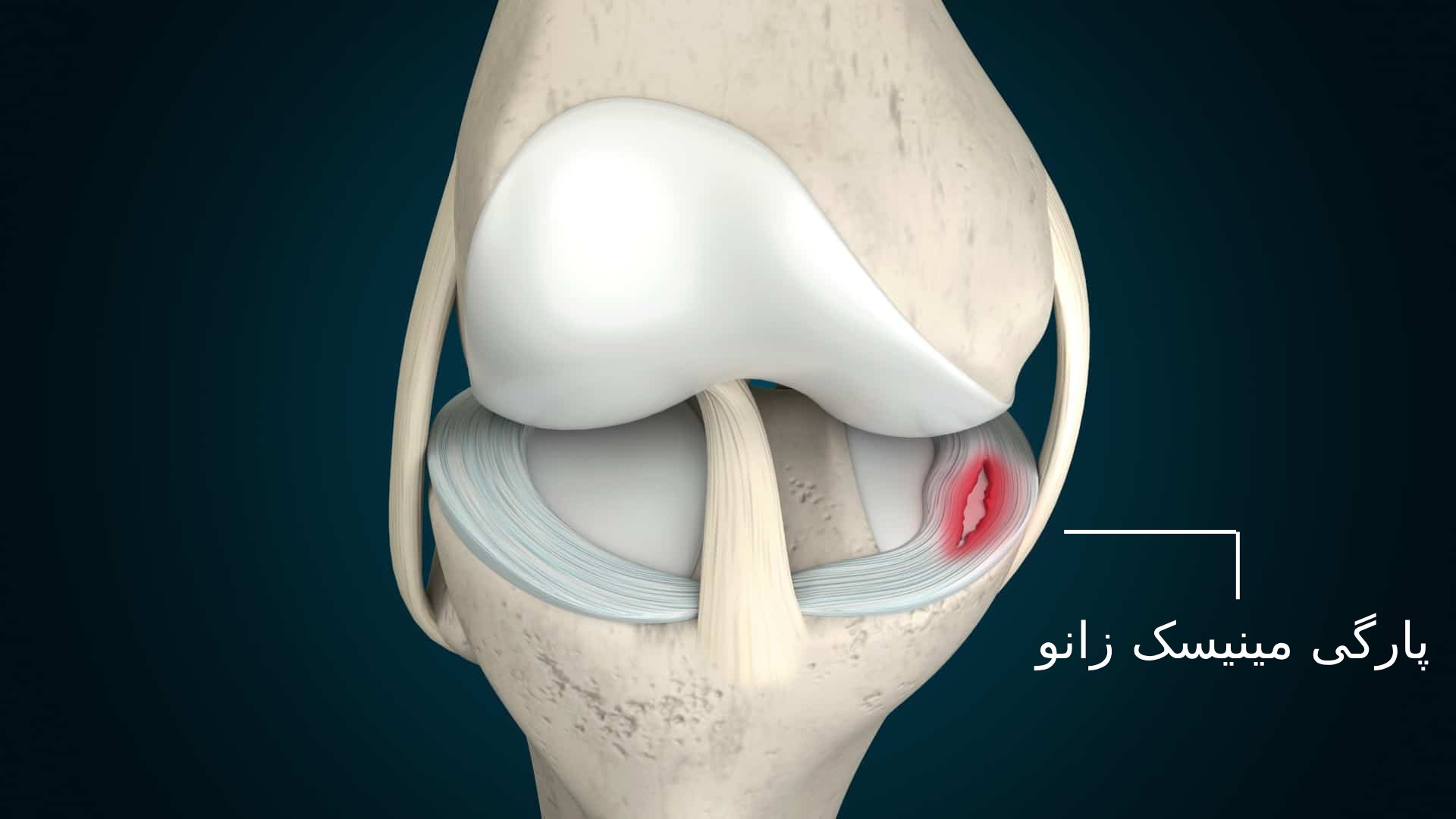Anatomy and Function of the Meniscus

Imagine your knee as a complex hinge, allowing you to bend, straighten, and rotate your leg. At the heart of this intricate joint lies a pair of C-shaped cartilage structures known as the menisci. These shock absorbers play a vital role in keeping your knee healthy and functional.
Structure and Location of the Meniscus
The menisci are made of tough, rubbery cartilage that acts as a cushion between your thighbone (femur) and shinbone (tibia). They are located in the knee joint, positioned between the articular surfaces of the femur and tibia. Each knee has two menisci: a medial meniscus on the inner side of the knee and a lateral meniscus on the outer side.
Role of the Meniscus in Knee Function
The menisci play a crucial role in maintaining the health and stability of your knee joint.
- Weight Distribution: They help distribute weight evenly across the knee joint, reducing stress on the cartilage and preventing wear and tear.
- Shock Absorption: Acting like shock absorbers, they cushion the impact of activities like walking, running, and jumping, protecting the joint from damage.
- Joint Stability: They contribute to the stability of the knee joint by deepening the articular surface and providing a more secure fit for the bones.
Types of Menisci
The medial and lateral menisci have distinct characteristics:
- Medial Meniscus: This C-shaped structure is larger and more firmly attached to the joint capsule, making it more susceptible to tears. It plays a significant role in knee stability.
- Lateral Meniscus: This more oval-shaped structure is more mobile and less firmly attached, making it less prone to tears. It contributes to shock absorption and weight distribution.
Causes and Risk Factors of Meniscus Tears

The meniscus, a C-shaped piece of cartilage in the knee, acts as a shock absorber and helps distribute weight evenly. A meniscus tear occurs when this cartilage is damaged, often due to a sudden twisting or forceful impact. Understanding the causes and risk factors of meniscus tears is crucial for prevention and effective treatment.
Common Mechanisms of Injury
Meniscus tears commonly occur due to sudden and forceful movements of the knee. Here are some of the most frequent mechanisms of injury:
- Twisting or Pivoting: This is a common cause, especially during sports activities that involve sudden changes in direction, such as basketball, soccer, or skiing. When the foot is planted firmly on the ground and the knee is twisted, the meniscus can be torn.
- Direct Impact: A direct blow to the knee, such as a fall or a collision, can also lead to a meniscus tear. This impact can force the knee joint beyond its normal range of motion, damaging the meniscus.
- Degenerative Changes: As we age, the meniscus can become thinner and weaker, making it more susceptible to tears. This is often due to years of wear and tear on the joint.
Risk Factors for Meniscus Tears
Several factors can increase your risk of developing a meniscus tear. Understanding these factors can help individuals take preventive measures:
- Age: The risk of meniscus tears increases with age. As we get older, the meniscus becomes less flexible and more prone to tearing. According to the American Academy of Orthopaedic Surgeons, approximately 70% of meniscus tears occur in people over the age of 45.
- Athletic Participation: Individuals who participate in high-impact sports, especially those involving twisting or pivoting movements, are at a higher risk of meniscus tears. Sports like basketball, football, soccer, and skiing are particularly associated with this injury.
- Underlying Conditions: Certain underlying conditions can increase the risk of meniscus tears. These include obesity, osteoarthritis, and previous knee injuries.
Prevalence of Meniscus Tears
Meniscus tears are a common injury, particularly among athletes and older adults. According to a study published in the Journal of Bone and Joint Surgery, the prevalence of meniscus tears is estimated to be between 1% and 2% in the general population. The incidence is higher among athletes, with some studies reporting rates of up to 10% in certain sports.
Symptoms and Diagnosis of Meniscus Tears

A meniscus tear can cause a range of symptoms, from mild discomfort to debilitating pain. The severity of symptoms often depends on the location and severity of the tear. Understanding these symptoms and the diagnostic methods used to identify meniscus tears is crucial for effective treatment and recovery.
Symptoms of Meniscus Tears
The most common symptoms of a meniscus tear include:
- Pain: Sharp, sudden pain, especially during or after activities that involve twisting or pivoting, can be a telltale sign of a meniscus tear. The pain may be localized to the knee joint or radiate down the leg.
- Swelling: Swelling in the knee joint is another common symptom. It may develop immediately after the injury or gradually over time.
- Clicking or Popping: A clicking or popping sensation in the knee during movement can indicate a torn meniscus. This occurs when the torn fragment of the meniscus moves within the joint.
- Locking: The knee may lock in a bent position, making it difficult to straighten. This occurs when a piece of the torn meniscus gets trapped between the bones of the knee joint.
- Stiffness: The knee may feel stiff and difficult to bend or straighten.
- Instability: The knee may feel unstable or give way, especially during weight-bearing activities.
Diagnosis of Meniscus Tears
Diagnosing a meniscus tear involves a combination of physical examination, imaging studies, and sometimes arthroscopy:
- Physical Examination: A doctor will perform a physical exam to assess the knee’s range of motion, stability, and tenderness. They may also perform specific tests to check for signs of a meniscus tear, such as the McMurray test, which involves rotating the knee while applying pressure.
- Imaging Studies:
- Magnetic Resonance Imaging (MRI): An MRI is the gold standard for diagnosing meniscus tears. It provides detailed images of the knee joint, allowing doctors to visualize the tear’s location, size, and severity. An MRI can also rule out other possible causes of knee pain, such as ligament injuries or cartilage damage.
- X-ray: While X-rays are not as effective as MRI in diagnosing meniscus tears, they can be helpful in ruling out other conditions, such as fractures or arthritis.
- Arthroscopy: Arthroscopy is a minimally invasive surgical procedure that allows doctors to directly visualize the knee joint. A small camera is inserted into the joint, providing a clear view of the meniscus. Arthroscopy can be used to diagnose a meniscus tear, as well as to repair or remove the torn tissue.
Differences in Symptoms and Diagnosis Based on Location and Severity
The location and severity of a meniscus tear can significantly affect the symptoms and diagnosis:
- Location: Tears can occur in different parts of the meniscus, including the inner (medial) and outer (lateral) portions. Tears in the inner portion are more common and often cause more severe symptoms, such as locking and instability.
- Severity: Meniscus tears can range from small, partial tears to large, complete tears. Small tears may only cause mild pain, while large tears can cause significant pain, swelling, and instability.
For example, a small, partial tear in the outer portion of the meniscus may only cause mild pain and clicking, while a large, complete tear in the inner portion can cause severe pain, locking, and instability, making it difficult to walk or perform daily activities.
A meniscus tear, a common knee injury, can be incredibly painful and debilitating. Understanding the recovery process is crucial for regaining full function. Torn meniscus recovery often involves a combination of rest, physical therapy, and sometimes surgery. The key to success lies in following a structured rehabilitation program, ensuring proper healing and preventing future complications.
A meniscus tear can significantly impact your mobility, so taking the necessary steps to recover fully is paramount.
A meniscus tear is a common injury, often occurring during sports or even everyday activities. It can be debilitating, causing pain, swelling, and limited mobility. The severity of the tear dictates the treatment, which can range from conservative measures to surgery.
For athletes like JJ McCarthy, a meniscus tear can be a major setback. Understanding the specific nature of jj mccarthy knee injury can help us understand the potential impact on his performance. Regardless of the cause, proper diagnosis and treatment are crucial for a full recovery from a meniscus tear.
